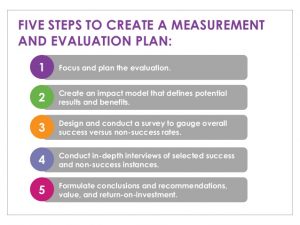Brinkerhoff’s Success Case Method
This Brinkerhoff’s Success Case Method isn’t just restricted to learning only. It focuses on the qualitative analysis. Thus, it analyses the major business change – implementation of a new process and also the purchase of new equipment. The success case method involves the identification of the least and most successful cases in a program. Also, examines them in detail. This approach was developed by Robert Brinkerhoff, for assessing the impacts of organizational interventions. Hence, the evaluation should address the following questions:
- How well is an organization using learning to improve the performance?
- Which organizational resources or processes are in support of performance improvement? also, what can be or needs improvement?
- What are the organizational barriers that stand in the way of performance improvement?
The number of steps involved in the success case method
- Developing an impact model: this involves the identification of learning opportunity’s goals and to determine how these goals connect to the business needs. Therefore this model (SCM) defines what success should actually look like.
- Design and implement survey: to identify the best and the worst cases. E.g. how you applied what you learned to achieve the business result?
- Set up interviewing and documenting: the success case to work as evidence.
- Communicating conclusions, findings, and recommendations: this shares what success has occurred. Also what organizational resources have supported these successes.
Therefore the success and case stories are extremely attractive. As they provide the involvement for the dialogue about the continuous process involvement.
For certification in the L&D visit –


